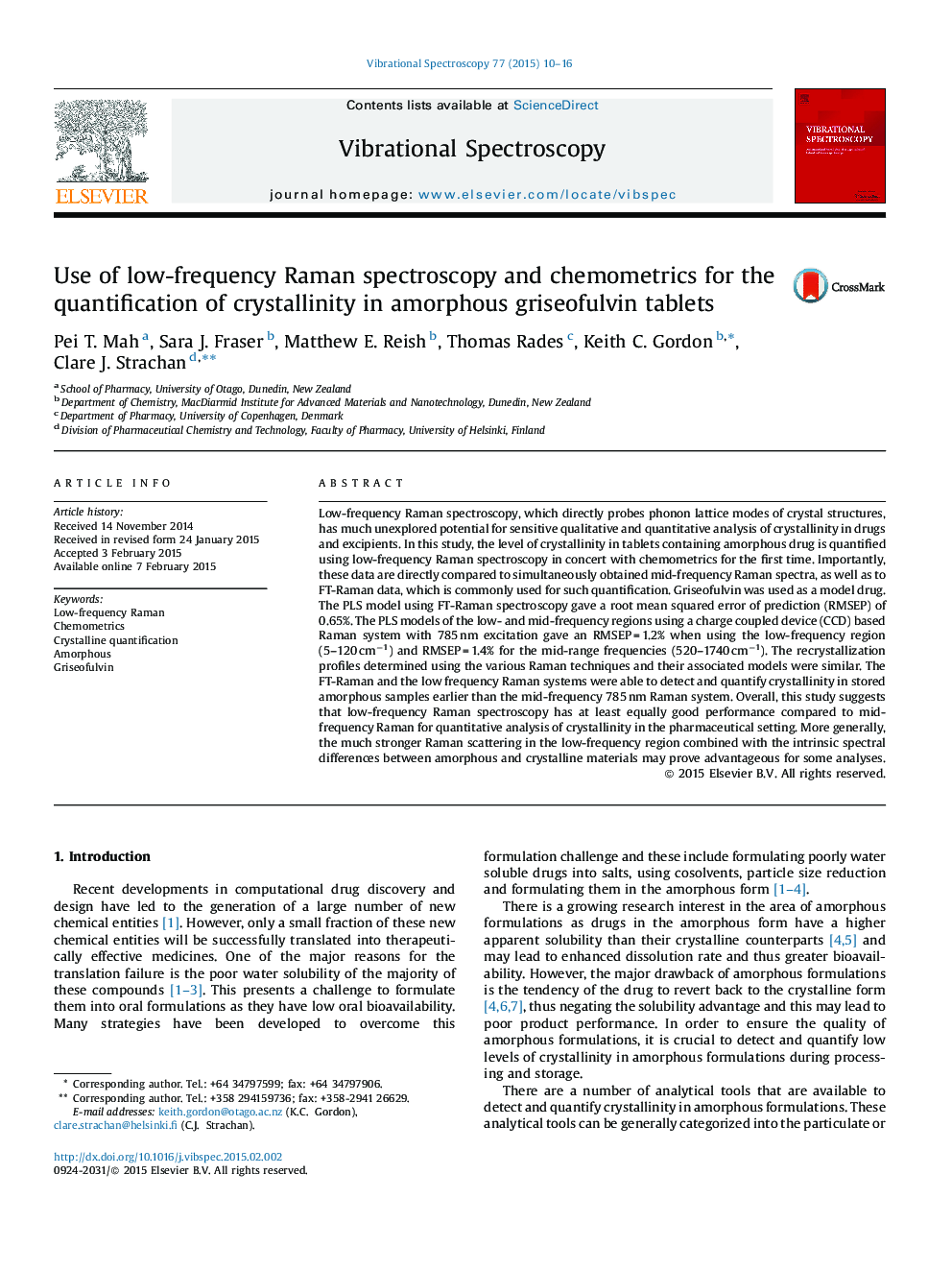| Article ID | Journal | Published Year | Pages | File Type |
|---|---|---|---|---|
| 1251775 | Vibrational Spectroscopy | 2015 | 7 Pages |
•Use of a Raman system in which volume Bragg gratings allow for sensitive measurement of low frequency Raman region. Spectral coverage allows for simultaneous measurement of lower frequency (intermolecular vibrations) and higher frequency (intramolecular vibrations).•Comparison of these two regimes made in terms of recrystallization of amorphous griseofulvin in pressed tablets.•Use of multivariate data analysis in combination with low frequency Raman to detect and quantify early onset of crystallisation.•The quantified level of crystallinity measured with low and mid frequency Raman data collected on the same instrument compared; low frequency is better based on higher signal intensities of these bands.•Dynamic behaviour of the recrystallization behaviour compared for FT and low frequency Raman data; data are consistent.
Low-frequency Raman spectroscopy, which directly probes phonon lattice modes of crystal structures, has much unexplored potential for sensitive qualitative and quantitative analysis of crystallinity in drugs and excipients. In this study, the level of crystallinity in tablets containing amorphous drug is quantified using low-frequency Raman spectroscopy in concert with chemometrics for the first time. Importantly, these data are directly compared to simultaneously obtained mid-frequency Raman spectra, as well as to FT-Raman data, which is commonly used for such quantification. Griseofulvin was used as a model drug. The PLS model using FT-Raman spectroscopy gave a root mean squared error of prediction (RMSEP) of 0.65%. The PLS models of the low- and mid-frequency regions using a charge coupled device (CCD) based Raman system with 785 nm excitation gave an RMSEP = 1.2% when using the low-frequency region (5–120 cm−1) and RMSEP = 1.4% for the mid-range frequencies (520–1740 cm−1). The recrystallization profiles determined using the various Raman techniques and their associated models were similar. The FT-Raman and the low frequency Raman systems were able to detect and quantify crystallinity in stored amorphous samples earlier than the mid-frequency 785 nm Raman system. Overall, this study suggests that low-frequency Raman spectroscopy has at least equally good performance compared to mid-frequency Raman for quantitative analysis of crystallinity in the pharmaceutical setting. More generally, the much stronger Raman scattering in the low-frequency region combined with the intrinsic spectral differences between amorphous and crystalline materials may prove advantageous for some analyses.
